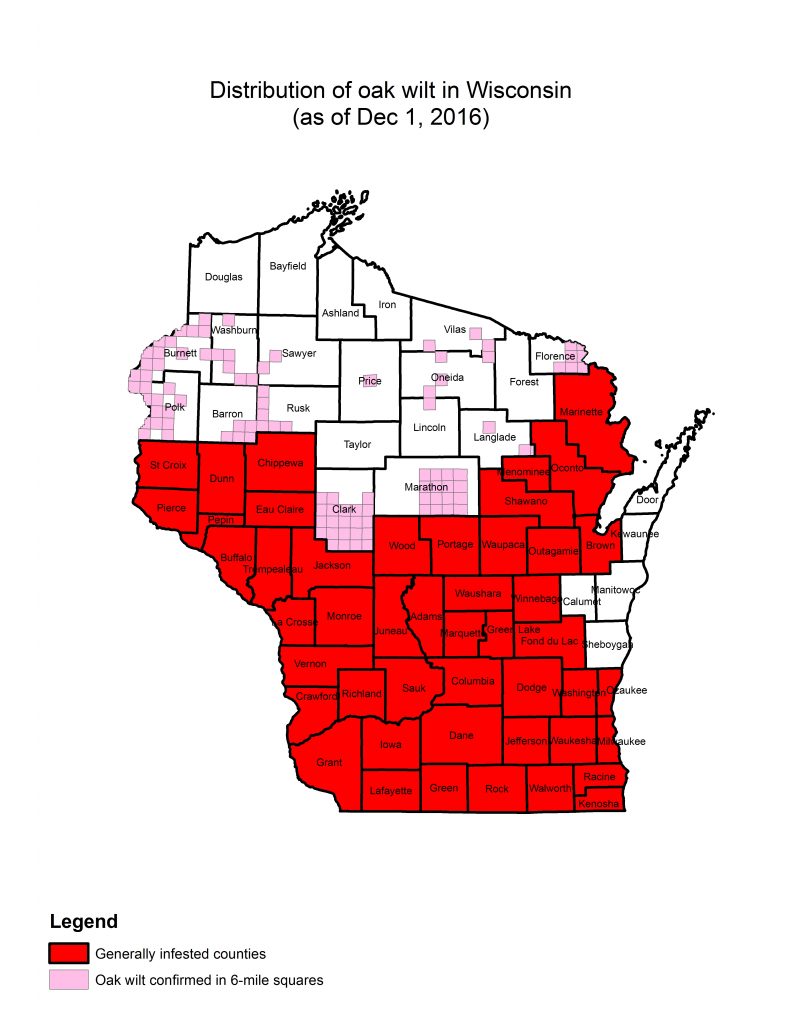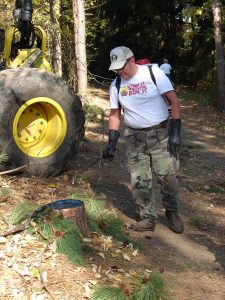
Map of the known distribution of oak wilt in Wisconsin as of December 1, 2016.
Oak wilt, a deadly fungal disease affecting red oaks, was confirmed for the first time in Price County in 2016. In addition to the new county find, the disease was also confirmed in various townships in northern Wisconsin counties where we already knew oak wilt was present.
The map in the oak harvesting guidelines was updated based on the find.
Oak wilt is commonly found in the southern two-thirds of the state, but has been creeping northward. The disease was found for the first time in 2010 in Oneida County, in 2012 in Lincoln, Sawyer, and Vilas counties, in 2013 in Rusk County, and in 2014 in Washburn County. Oak wilt has been confirmed in all Wisconsin counties except Ashland, Bayfield, Calumet, Door, Douglas, Forest, Iron, Kewaunee, Manitowoc, Sheboygan, and Taylor.
Read more about oak wilt prevention in the news release from March 21, 2017: Protect oak trees from oak wilt by waiting until after July to prune.
Written by: Kyoko Scanlon, forest pathologist, Fitchburg (Kyoko.Scanlon@Wisconsin.gov), 608-275-3275.


